Western Hills Viaduct
About the Western Hills Viaduct
The Western Hills Viaduct connects Interstate 75 and major roads on Cincinnati’s West Side and in Hamilton County to the Downtown and Uptown areas of the city. It is a major transportation link that carries more than 55,000 vehicles a day over the Mill Creek Valley and a large, active railroad yard.
Originally built in the early 1930s, the viaduct is reaching the end of its useful life. The City of Cincinnati and Hamilton County are leading a joint effort to replace the viaduct. The team has secured the funding to build a new “extradosed” bridge immediately to the south of the current viaduct. Site preparation is under way. Construction of the new bridge is expected to begin by 2026.
The existing viaduct will remain in place for through traffic until the new bridge is finished in 2030.
Please read more about the replacement project below.
2024
Bottom Deck of Western Hills Viaduct Closing Saturday for Routine Maintenance and Scheduled Inspection
CINCINNATI – The bottom deck of the Western Hills Viaduct will be closed Saturday, May 18, from 6:00 a.m. to 9:00 p.m. for routine inspection and scheduled maintenance.
2023
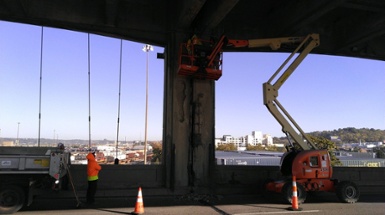
Western Hills Viaduct: Debris Removed at Second Trouble Spot, Additional Sites on Bottom Deck to be Checked Next Week
CINCINNATI – Crews from the City of Cincinnati on Tuesday inspected and addressed a trouble spot on a pair of columns on the north side of the Western Hills Viaduct. Some of the concrete that surrounds the columns broke loose and fell into the westbound curb lane Monday. .
Western Hills Viaduct: Lane Closure on Tuesday for Inspection on Bottom Deck
CINCINNATI – The northernmost lane heading west along the bottom deck of the Western Hills Viaduct will be closed tomorrow, Tuesday, Oct. 24, so crews from the City of Cincinnati can closely inspect a second trouble spot about 200 feet to the east of the repair completed today, Monday, Oct. 23.
Update: Timeline for Western Hills Viaduct Emergency Repair Extended to Monday, Other Maintenance on Schedule for Saturday
CINCINNATI – Crews for the City of Cincinnati are planning to complete the emergency repair on the Western Hills Viaduct on Monday, Oct. 23, rather than Thursday, Oct. 19, as previously indicated.
Western Hills Viaduct: Lane Closures on Top, Bottom Decks Wednesday and Thursday for Emergency Repair, Additional Maintenance Saturday
CINCINNATI – The middle two lanes on the top deck and the two southern lanes on the bottom deck of the Western Hills Viaduct will be closed tomorrow, Wednesday, Oct. 18, and Thursday, Oct. 19, for an emergency repair. In addition, on Saturday, the bottom deck will be closed for previously scheduled maintenance.
Team Designing and Building the Western Hills Viaduct Replacement Kicks off Project's Next Phase
CINCINNATI – The full team designing and building the replacement for the Western Hills Viaduct is kicking off the next phase of the $398 million project with an in-person workshop in Cincinnati to address a range of engineering and construction details.
Bottom Deck Closing Overnight for Inspection May 15 - 19 and All Day May 20
CINCINNATI – The bottom deck of the Western Hills Viaduct will be closed overnight Monday through Friday, May 15 – 19, and during the day Saturday, May 20, for a scheduled inspection.
City Announces Construction Manager for Western Hills Viaduct Replacement, Demolition of Second Building Begins in April
March 29, 2023
CINCINNATI – The City of Cincinnati and Hamilton County have selected the joint venture team of Walsh Group and Kokosing Construction Co. to build the Western Hills Viaduct replacement project, pending contract negotiations. Walsh is based in Chicago and Kokosing in the Columbus suburb of Westerville, Ohio.
2022
Western Hills Viaduct Replacement Project Update
Nov 2, 2022
CINCINNATI – The bottom deck of the Western Hills Viaduct will close this Saturday, Nov. 5, between 7:00 a.m. and approximately 3:00 p.m. for inspection and scheduled maintenance.
Cincinnati Receives $127 Million from Infrastructure Bill
Sept 12, 2022
CINCINNATI – Officials are excited about news that the City of Cincinnati has been awarded a major federal grant for the Western Hills Viaduct replacement project.
Cincinnati Receives $127 Million from Infrastructure Bill
Sept 9, 2022
“This project is going to change the face of our city for a generation. Reconnecting our neighborhoods to the jobs and everyday destinations they depend on is essential to our growth as a city that works for everyone,” Mayor Aftab said. “The Biden-Harris Administration continues to prove that they have the backs of Cincinnatians, and I am extremely grateful for the Department of Transportation and our state and local leaders for collaborating to make this possible.”
Bottom Deck of Western Hills Viaduct Closing Saturday for Routine Maintenance
May 17, 2022
CINCINNATI – The bottom deck of the Western Hills Viaduct will close this Saturday, May 21, between 6:00 a.m. and approximately 3:00 p.m. for inspection and scheduled maintenance.
Initial Site Preparation for Western Hills Viaduct Replacement Starts This Week
March 1, 2022
CINCINNATI – Initial site preparation for the Western Hills Viaduct replacement project begins this week with the demolition of a vacant building at Harrison and State avenues in South Fairmount. It’s the first of several buildings that will be removed by the mid-2020s to make room for the future bridge.
Question-and-Answer Session on Western Hills Viaduct Replacement Project
Feb 28, 2022
Project Engineers to Discuss Site Preparation for Western Hills Viaduct Replacement Bridge
2021
Net to be Installed on Bottom Deck of Western Hills Viaduct at Spring Grove Ave
May 4, 2021
CINCINNATI – The bottom deck of the Western Hills Viaduct will be closed to through traffic between 8:00 p.m. and 6:00 a.m. this Friday, Saturday and Sunday, May 7 – 9.
Bottom Deck of Western Hills Viaduct Closing Saturday for Scheduled Inspection
May 20, 2021
CINCINNATI – The bottom deck of the Western Hills Viaduct will be closed to all traffic between 7:00 a.m. and 3:00 p.m. this Saturday, May 22, for a scheduled inspection. The ramp at Exit 2B from southbound Interstate 75 to the viaduct also will be closed Saturday.
Bottom Deck of Western Hills Viaduct Closing Overnight Friday to Saturday Morning
June 3, 2021
CINCINNATI – The bottom deck of the Western Hills Viaduct will be closed to through traffic from 8:00 p.m. Friday, June 4, until 6:00 a.m. Saturday, June 5, to allow crews to complete the installation of netting above the intersection with Spring Grove Avenue.
Bottom Deck of Western Hills Viaduct Closing Saturday for Routine Maintenance
April 6, 2021
CINCINNATI – The bottom deck of the Western Hills Viaduct will close this Saturday, April 10, between 6:00 a.m. and approximately 3:00 p.m. for inspection and scheduled maintenance.
Western Hills Viaduct: Bottom Deck Closing Saturday for Routine Maintenance
Jan 27, 2021
CINCINNATI – The bottom deck of the Western Hills Viaduct will close on an upcoming Saturday for inspection and scheduled maintenance. The date was originally scheduled for Jan. 30 but has been postponed due to inclement weather.
2020
Highlights from WHV Joint Public Meeting
Dec 4, 2021
CINCINNATI – The City of Cincinnati and Hamilton County held a joint public meeting Thursday evening, Dec. 3, 2020, to share details about the Western Hills Viaduct Replacement Project.
Western Hills Viaduct: Recording of Dec. 3 Meeting
Dec 4, 2020
CINCINNATI - See a recording of Western Hills Viaduct replacement project virtual meeting on YouTube or Citicable via the following links...
Western Hills Viaduct Replacement Project Meeting Dec. 3
Dec 2, 2020
CINCINNATI - Please join us for a virtual public meeting about the Western Hills Viaduct replacement project.
The City of Cincinnati Department of Transportation & Engineering has hired a Construction Manager at Risk (CMAR) and an Independent Cost Estimator (ICE) for a $398 million project to replace the Western Hills Viaduct, a critical transportation link that connects Interstate 75 and major roads on Cincinnati’s West Side to the Downtown and Uptown areas.
This complex construction project will extend a half mile over an urban valley with a large, active railroad yard and a tributary of the Ohio River.
The project team used a two-step procurement process for the CMAR that included a Request for Qualifications (RFQ) and a subsequent Request for Proposal (RFP) issued to short-listed firms. The ICE was selected using an RFQ for professional services. The city has finalized its contracts with both the CMAR and ICE.
► The city's construction contractor is Walsh Kokosing Joint Venture.
► The city's independent cost estimator is Kelly McNutt Consulting.
Click on the following images to link to more information and to view a short video about the project:
Click on images below to display:
Following are answers to frequently asked questions about the status of the Western Hills Viaduct:
Safety
Q: Why does the viaduct need to be replaced?
The viaduct is reaching the end of its useful life. Its structural condition is worsening with some deterioration of the structural steel members. The steel members are encased in concrete, which makes them difficult to inspect and maintain. In addition, the geometry of the viaduct doesn't meet current design standards, and pedestrian and bicycle access are poor.
Q: Is the viaduct safe to use?
Yes, the viaduct is safe for travel for all vehicles that do not exceed the legally posted weight limits. The city performs regular maintenance and inspections on the viaduct. Our maintenance protocol includes inspecting expansion joints and the identification and removal of concrete that appears susceptible to falling. In addition, netting is installed above the Spring Grove intersection to prevent loose concrete from falling from this hard-to-reach area.
Q: Why can concrete become loose and fall from the structure?
The viaduct’s concrete-encased steel structure is gradually deteriorating due to rust, which is caused by prolonged exposure to wet weather and salt from snow removal. Steel expands when it rusts, which causes the concrete attached to it to break loose and flake off.
Q: Why did the city install netting on the viaduct?
The city installed nets above the intersection of Spring Grove Avenue in June 2021. This area was increasingly difficult to manage through regular inspections and chipping because it is in a narrow opening that is hard to see and reach. It is the highest overhead area along the half-mile stretch of the viaduct, measuring more than 40 vertical feet between Spring Grove Avenue and the lower deck. Maintenance crews regularly remove loose concrete by chipping it off the upper deck to prevent it from falling to the lower deck. The nets catch loose concrete that cannot be seen or easily reached.
Q: How much netting is installed on the viaduct?
There are nets in one area. Those nets are attached between floor beams above the viaduct’s intersection at Spring Grove Avenue. The maintenance of this area, which is more than 40 feet overhead, is difficult to perform because the opening between the floor beams is so narrow and hard to reach. The nets catch loose concrete that may slough off in this area.
Q: Why isn’t netting installed along the full length of the viaduct?
Netting is installed in the area that is otherwise difficult to reach and maintain to prevent falling concrete from becoming a safety hazard. The majority of the viaduct is easily within reach for our maintenance crews, and the netting would make proactive concrete removal more difficult in these low-risk areas.
Q: How often is the viaduct inspected?
The city performs inspections and removes loose concrete from the viaduct at least twice per year. In addition, inspections are a standard practice whenever other maintenance is performed on the viaduct.
Q: What is the viaduct’s condition rating?
The viaduct is rated 4 on a scale of 0 to 9 per state and federal standards. Bridges rated 4 or below are considered to be in “poor” condition. Bridges rated 5 or 6 are considered to be in “fair” condition. Those rated 7 are considered to be in “good” condition. A rating of 8 is considered “very good” and 9 is “excellent.”
What's Next
Q: What is the status of the replacement project?
The project team is in the preconstruction phase, which means the city and Hamilton County are working with the designer and contractor to develop the replacement bridge’s detailed design and determine the most efficient construction method. Initial site preparation also is underway, which includes demolition of buildings in the footprint of the new bridge, as well as utility and railroad track relocations.
Q: What is happening in 2024 and 2025?
Demolition of additional buildings in the footprint of the new bridge is planned in 2024. Two of the six identified buildings have been torn down. Relocation of an electric utility substation currently to the south of the existing viaduct is also slated to begin in 2024. The new substation will be located to the north of the existing viaduct. The team also plans to relocate a pair of railroad tracks in the railyard below the project site in 2025.
Q: When will construction of the new bridge begin?
Construction of the new bridge is expected to get underway in 2026.
Q: Who is going to build the replacement bridge?
The construction contractor is Walsh Kokosing Joint Venture.
Q: What will happen to the existing viaduct while the new bridge is built?
The existing viaduct will remain in place and continue to be used for travel until the new viaduct is completed, after which it will be removed.
Q: How much will it cost to replace the viaduct?
The total cost, which includes design, right-of-way acquisition, construction of the structure and removal of the existing viaduct, is currently estimated at $398 million. The replacement of the viaduct is funded with federal grants and local matching dollars from the City of Cincinnati, Hamilton County, and the State of Ohio.
Q: Where will the new bridge be located?
The new bridge will be located adjacent to the existing viaduct, approximately 50 feet to the south.
Q: What will the replacement bridge look like?
The viaduct’s replacement will be a cable-supported bridge, which combines the main elements of a box girder bridge and a cable-stayed bridge. The new bridge will be a single deck with eight travel lanes, four in each direction. It will include a protected multi-use path on the south side and a sidewalk on the north side.
Q: What criteria helped determine the new bridge’s design?
- Cost
- Aesthetics
- Durability/Maintainability
- Railroad Preference
- Constructability
- Claims Potential
- Traffic Operations
- Bridge Drainage
Q: What is the difference between a viaduct and a bridge?
The words are interchangeable, though viaducts traditionally refer to a bridge-like structures that extends across a valley or low, dry ground.
More About This Project
Q: How is the Ohio Department of Transportation (ODOT) involved in the project?
ODOT is responsible for designing and building the portion of the bridge that extends over I-75 and the associated ramps from the interstate. ODOT also administers the federal grants funding the design and right-of-way for the entire project.
Q: Will construction of the new viaduct affect traffic on I-75?
No impact is expected in the early phases of construction of the new viaduct. However, there will be an impact to I-75 traffic in the later phases of construction when the interstate’s southbound entrance ramp to the interchange is built to connect to the new bridge. Construction of the interchange, which ODOT is managing, will start after construction of the new bridge is underway.
Q: What is the most challenging aspect of the project?
The single most challenging aspect of the project is the need to build the new bridge over a large, active railyard with more than 30 tracks.
The viaduct is reaching the end of its useful life. Its condition rating is 4 on a scale of 0 to 9 per Ohio Department of Transportation (ODOT) standards. Nine is the best condition rating and 0 is the worst. A rating of 4 is classified as "poor."
As safety precautions, there are:
- Weight limits posted on the viaduct. The limits ban some heavily loaded single-unit trucks, affecting an estimated 5 percent or less of the 55,000 vehicles that cross the viaduct daily. The restrictions do not affect two-axle vehicles, which include most buses, or multi-unit trucks such as semi tractor-trailers. The restrictions apply to certain single-unit vehicles with three or more axels carrying certain weights.
- Nets installed above the intersection of Spring Grove Avenue and the lower deck of the viaduct to help catch loose concrete that cannot be seen or easily reached as part of normal maintenance and inspections.

To help maintain the viaduct, the City of Cincinnati Department of Transportation & Engineering (DOTE) performs regular maintenance and inspections that include:
- Chipping loose concrete from the underside of the deck
- Concrete sound checks to find and remove potentially loose concrete
- Sweeping debris
- Cleaning deck drains
City crews perform routine maintenance several times a year, typically in late fall and early spring. The amount of time it takes to perform maintenance varies, depending on the condition of the concrete.
Crews also review potential trouble spots if conditions change and additional inspections are warranted.
In addition, the Ohio Department of Transportation (ODOT) performs maintenance, as needed, on the I-75 ramps that connect to the viaduct.
Public Meetings
2021
Major Projects & Smart Government Committee Meeting
2020
Presentation for public meeting to present extradosed bridge design • Dec. 3, 2020
Transcript of Dec. 3 public meeting
Major Projects & Smart Government Committee Meeting • Oct. 27
2019
2018
Western Hills Viaduct Coalition Meeting • May 31
Western Hills Viaduct Coalition Meeting • Feb. 13
Major Projects & Smart Government Committee Meeting • Jan. 9
2017
Major Transportation & Regional Cooperation Committee Meeting • Aug. 28
2016
Public Meeting • Dec. 1
Public Meeting • Nov. 29
2014
Major Infrastructure Committee Meeting • May 24
2013
Public Meeting • Sept. 17
Public Meeting • Sept. 19
2012
Public Meeting • Jan. 17
Public Meeting • Jan. 19
NEPA Participation Statement
The City of Cincinnati Department of Transportation & Engineering and its partners are following the requirements of the National Environmental Policy Act (NEPA) of 1969 for the Western Hills Viaduct replacement project.
Enforced by the Federal Highway Administration (FHWA), the purpose of NEPA is to ensure that the environmental consequences of a proposed project and its components are thoroughly evaluated and considered before any final decisions are made. NEPA also requires that the public be informed and has the opportunity to provide input as part of the decision-making process.
In Ohio, FHWA has granted the Ohio Department of Transportation authority to oversee adherence to NEPA requirements. Under this arrangement, ODOT assumes responsibility for compliance with environmental laws, rules and orders, interagency consultation, and any other environmental related actions for Ohio-based transportation projects. This assignment of responsibilities streamlines the federal environmental review process and gives ODOT project review and approval authority. More information about this process can be found at https://www.transportation.ohio.gov/wps/portal/gov/odot/programs/nepa-odot.
Commitment to Public Involvement
To fulfill NEPA-based public involvement requirements, the City of Cincinnati will:
- Provide early and continuous opportunities for meaningful public involvement
- Provide adequate notice of public involvement opportunities and time for public review and comment at key transportation planning development milestones
- Provide reasonable public access to technical data and policy information
- Conduct public meetings at convenient and accessible locations and times
- Use visuals when feasible to describe the planning process and project information
- Make public information available in electronically accessible formats, whenever possible
- Demonstrate explicit consideration and response to public input received
- Seek out and consider the input of traditionally underserved populations, including low-income and minority households and populations with limited English proficiency; provide interpretation assistance when needed
Site preparation continues with planned demolition of the third building of six in footprint of new bridge
Duke Energy substation construction project begins north of the existing viaduct
Detailed design development continues for new bridge, targeting 60 percent completion by third quarter 2025
Full team conducting detailed planning for constructability of extradosed design, railroad track and utility relocations
Ongoing coordination with the nearby Brent Spence Bridge project, which includes a new I-75 interchange connecting to the future Western Hills Viaduct replacement
Site preparation continues with demolition of the second of six buildings in footprint of new bridge
City announces its construction manager, Walsh Kokosing Joint Venture
City names Kelly McNutt Consulting as its Independent Cost Estimator
Detailed design development continues with 30 percent completion reached
In September, city receives federal grant of $127 million, which provides remaining funding needed for construction of new bridge
Site Preparation begins March 1 with demolition of first of six buildings in footprint of new bridge
City advertises request for qualification/request for proposal to hire a construction management firm
Detailed design development under way
Awarded $205 million grant from Southwest Ohio Regional Transit Authority (SORTA), payable in installments of $8.2 million annually over 25 years
As a safety precaution, netting added to deck above Spring Grove Avenue
T.Y. Lin completes detailed feasibility study on six bridge replacement options.
T.Y. Lin recommends 'extradosed' bridge type.
As a safety precaution, weight limits posted on the Viaduct.
T.Y. Lin, City of Cincinnati, Hamilton County, ODOT, FHWA, and railroads conduct site visits and meet throughout the year to continue developing detailed plans for six possible replacement options.
Western Hills Viaduct Coalition is formed to support the replacement project.
First property acquisition finalized (Q Labs).
T.Y. Lin begins study on various bridge types with input from railroads and other stakeholders. Environmental assessment completed.
T.Y. Lin International is hired as the consultant for detailed design options.
Public meetings held to share recommended design and phasing plan of a replacement bridge.
City of Cincinnati and Hamilton County conduct cost-benefit analysis and engineering review with Ohio Department of Transportation (ODOT) and Federal Highway Administration (FHWA) to determine whether to rehab or replace existing Viaduct. Stakeholders agree replacement option is most advantageous.
URS outlines a total of 18 potential bridge configurations and three rehab alternatives as part of its preliminary engineering study. Public meetings held to obtain input.
URS Corp. is hired as project consultant to determine whether to rehab or replace the Viaduct. Public meetings held to obtain input. Environmental assessment begins.
City of Cincinnati and Hamilton County begin discussing engineering plans to rehab or replace the Viaduct.
Viaduct’s condition rating drops to “poor” and it is categorized as “functionally obsolete.”
Consolidation of 10 railyards under the Viaduct forms what becomes Queensgate Railyard.
First and only major rehabilitation of the Viaduct.
Viaduct is remodeled to connect to the new Interstate 75 interchange.
Western Hills Viaduct, a 3,500-foot double-deck span, opens to streetcar and vehicular traffic.
The northern-most stretch of the Brent Spence Companion Bridge project will connect to the Western Hills Replacement project via a new interchange with Interstate 75. The Ohio Department of Transportation is managing the interchange and the City of Cincinnati and Hamilton County are managing the replacement project.
► Read more about the new Brent Spence Companion Bridge

.jpg)
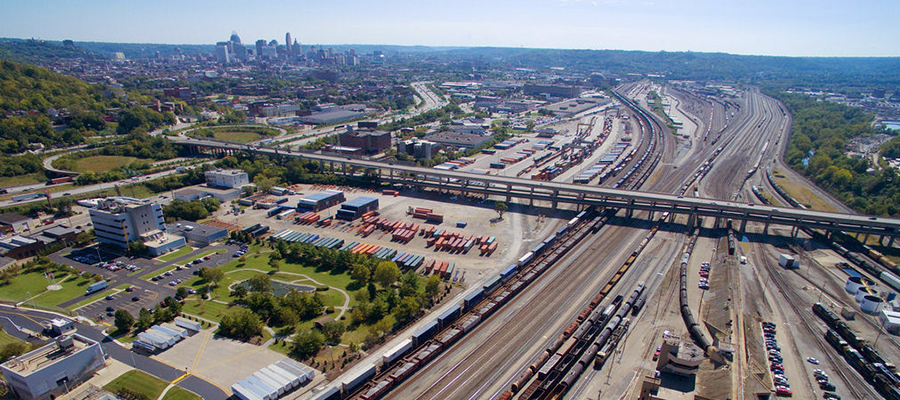

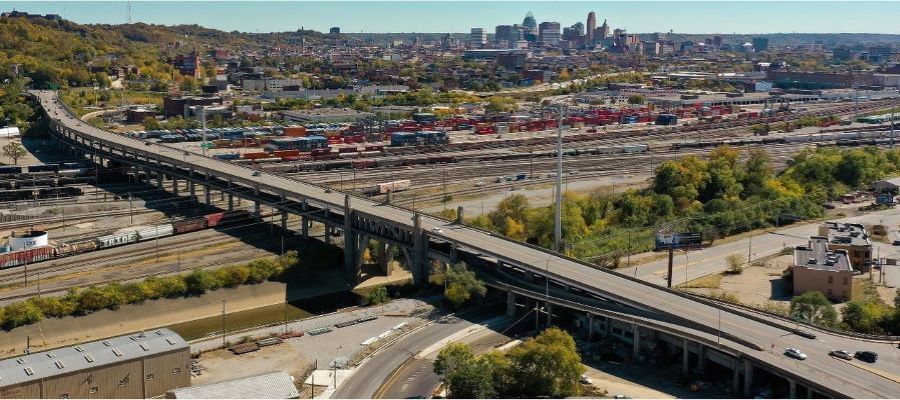
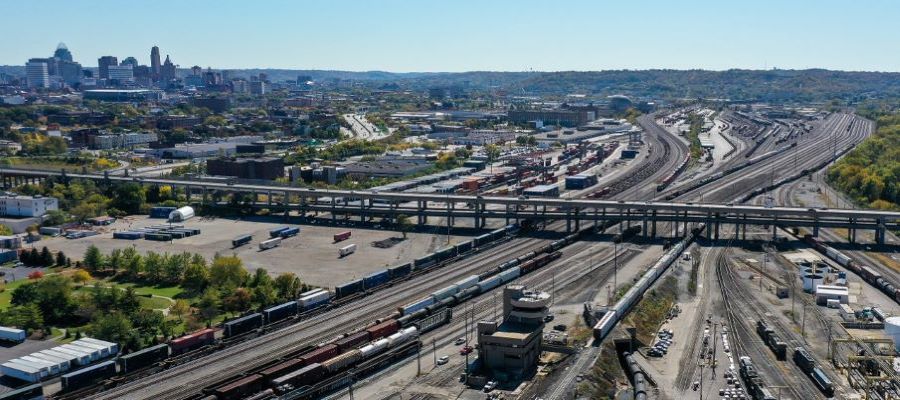



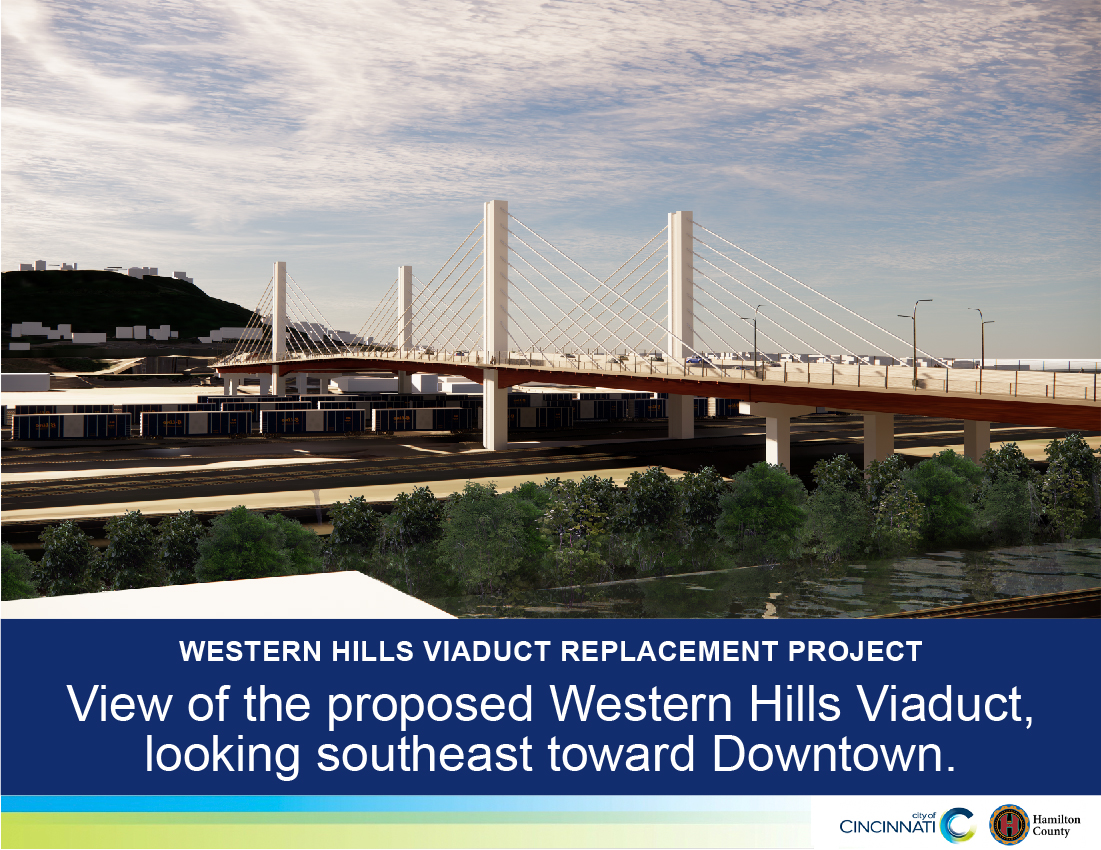
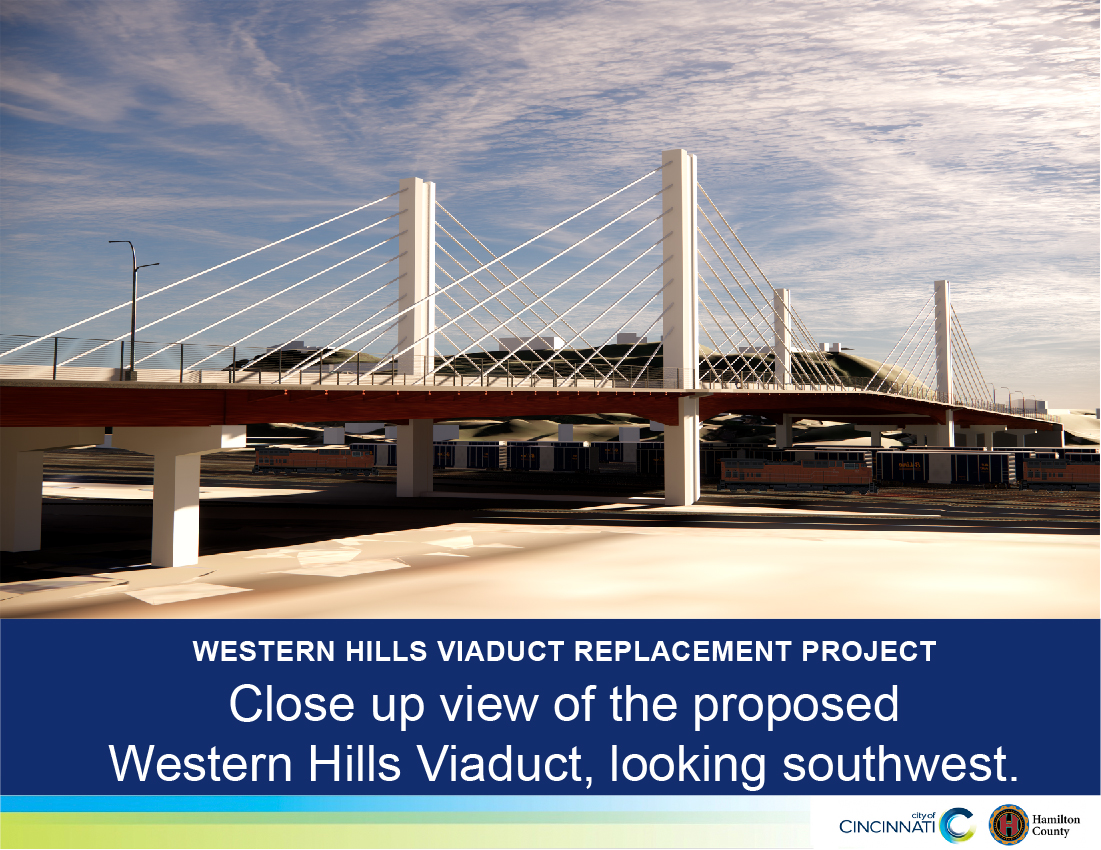
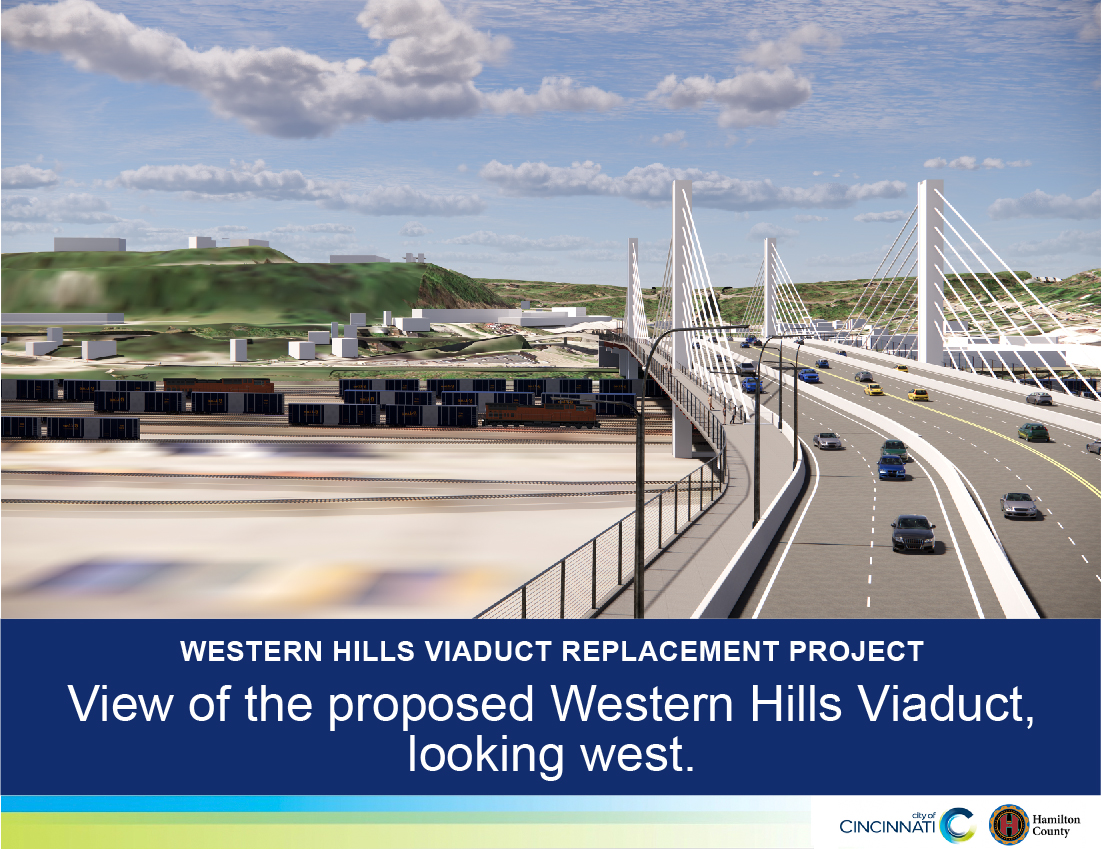

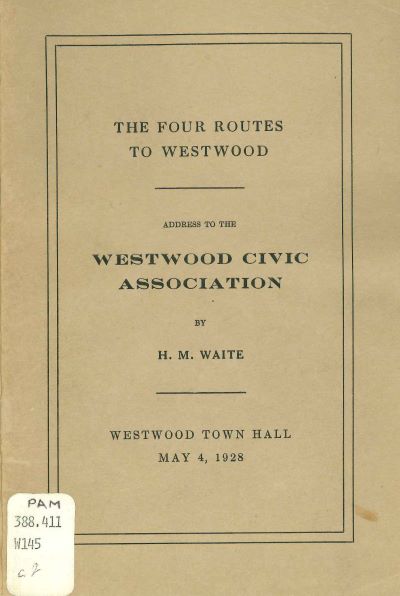
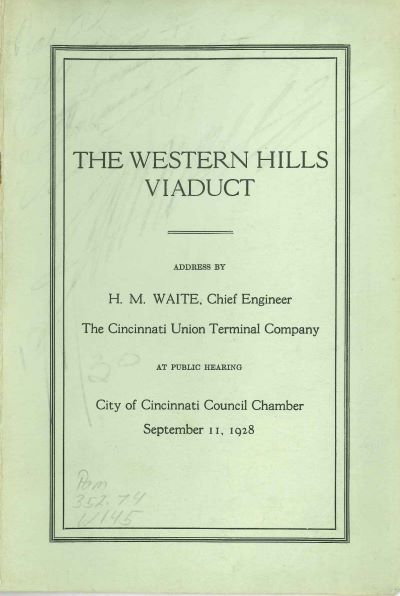
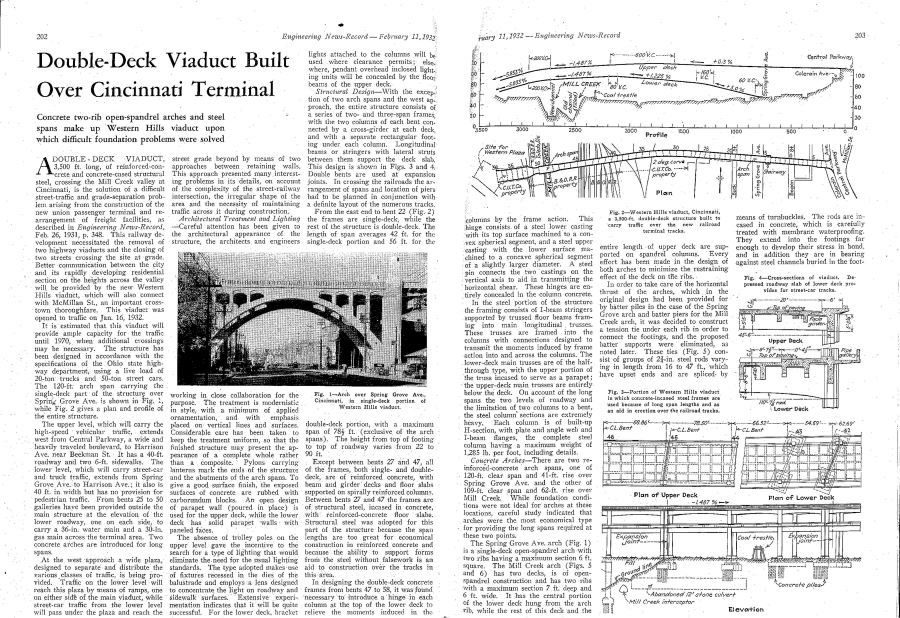
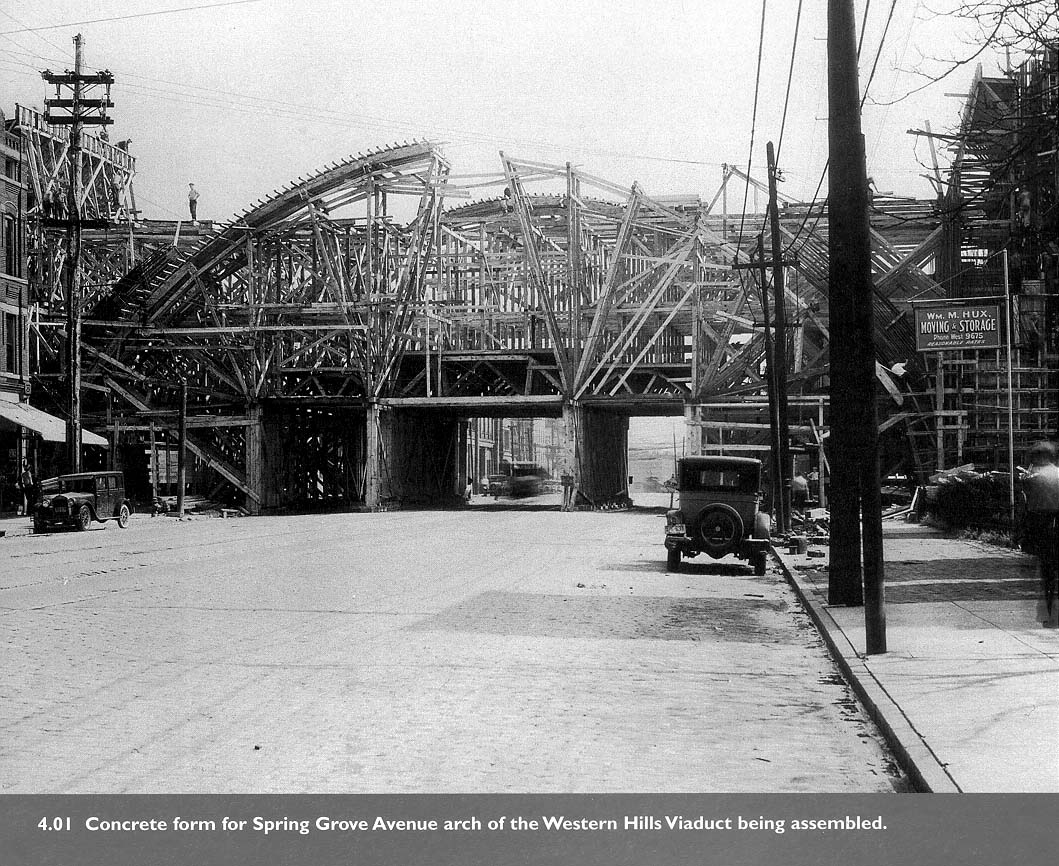
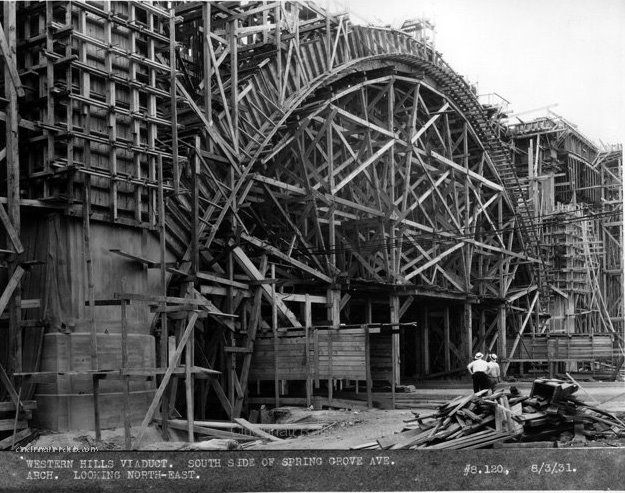
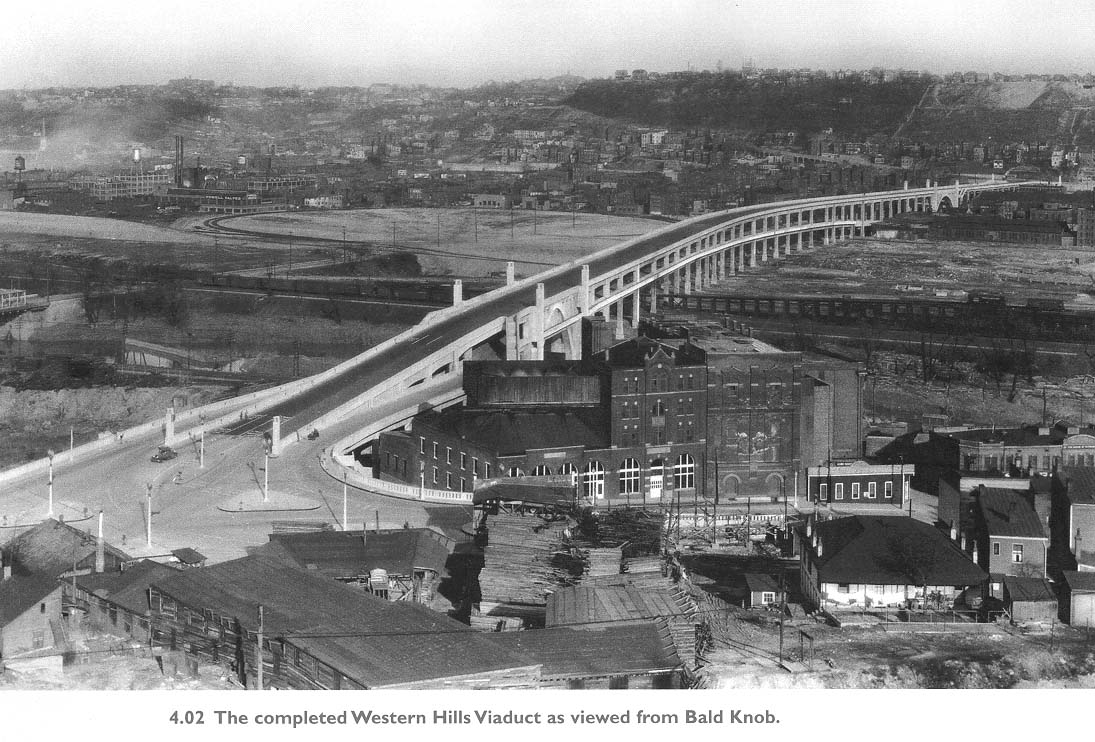

.jpg)
